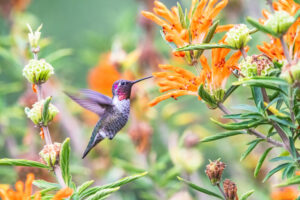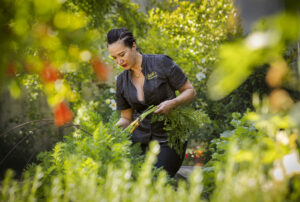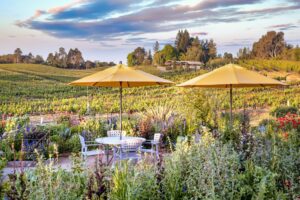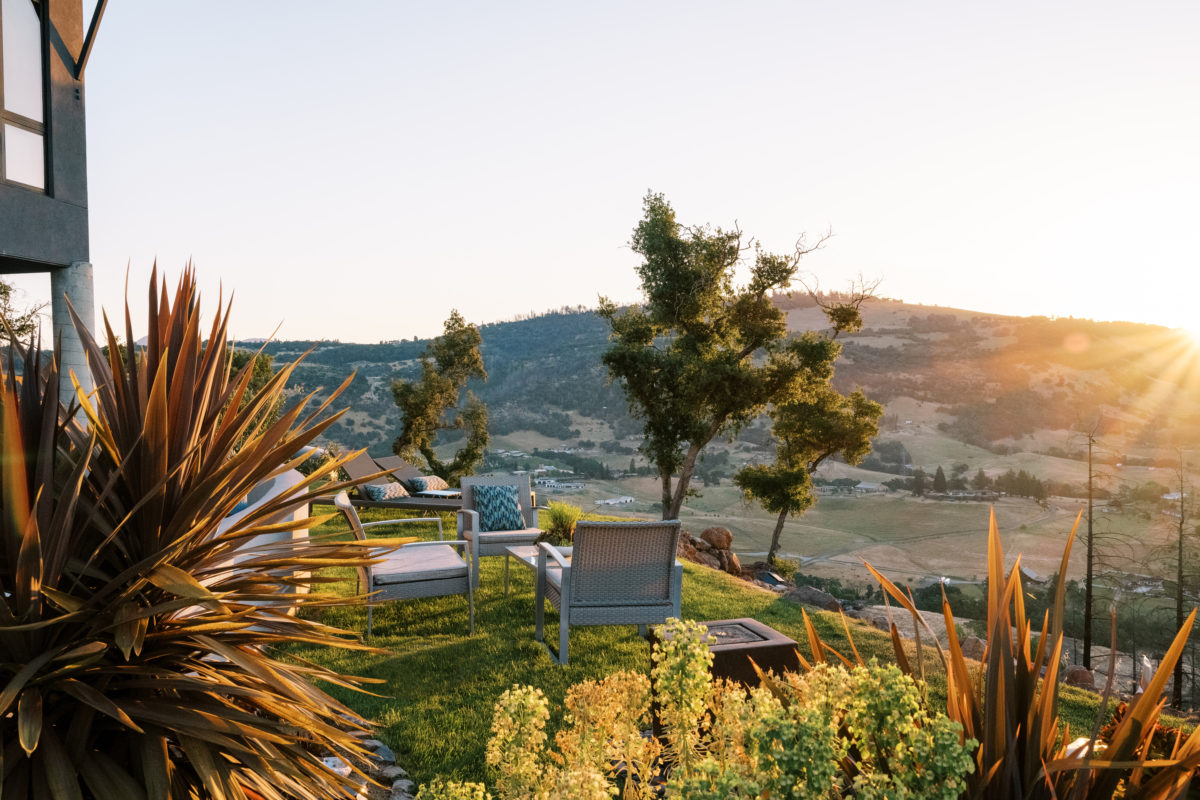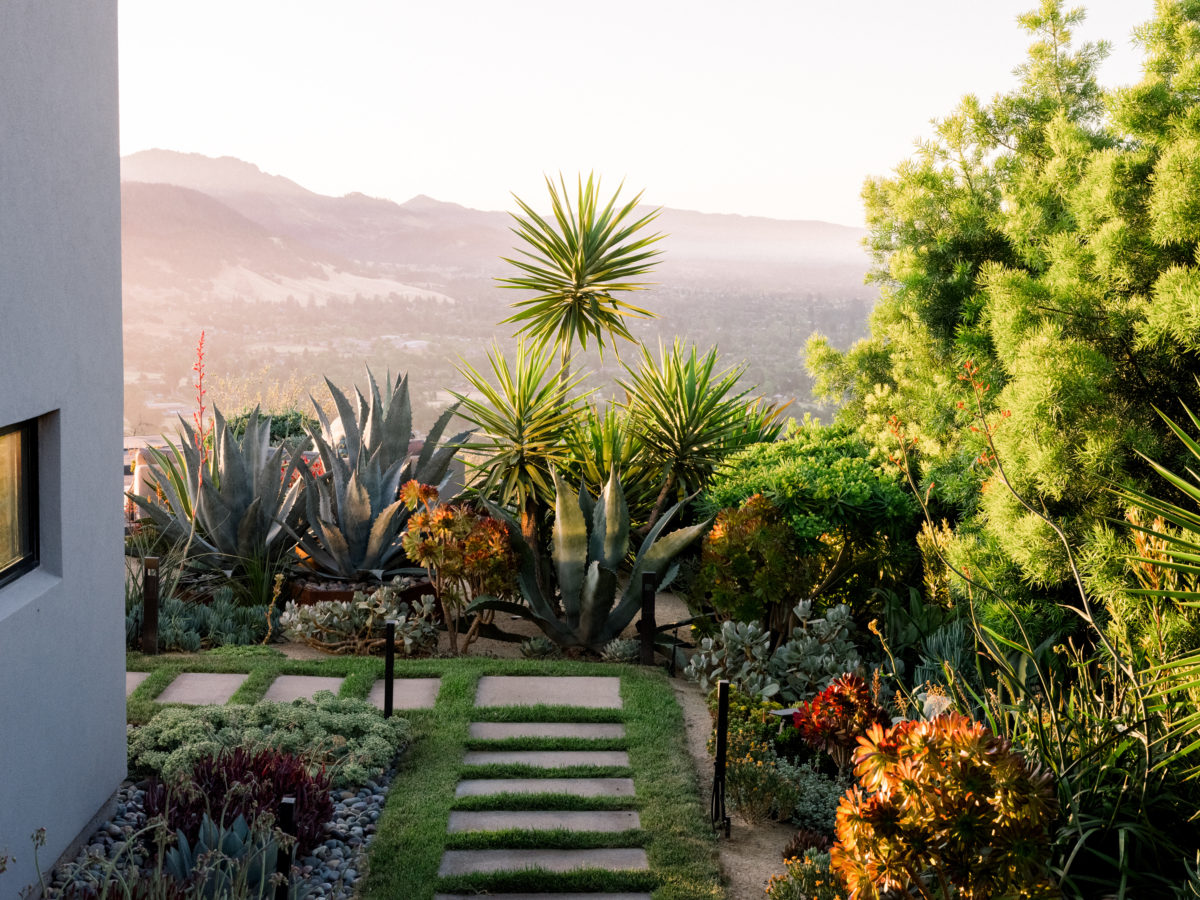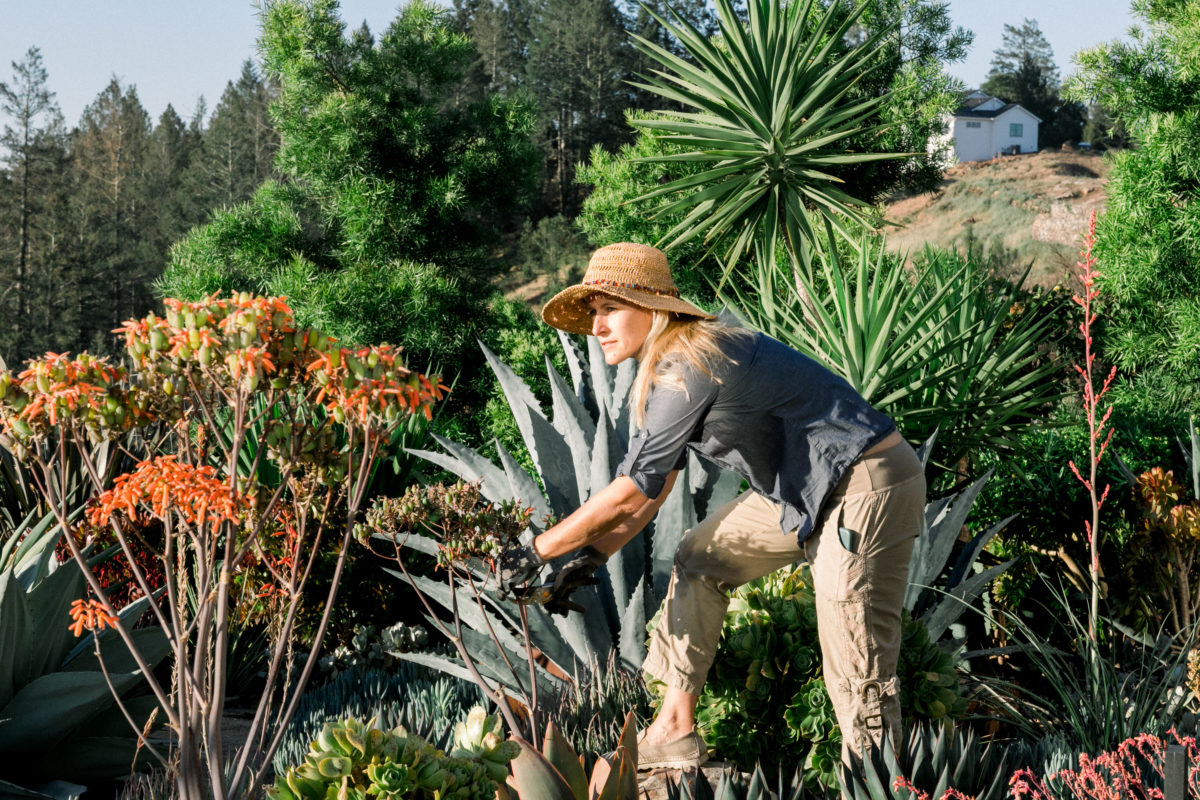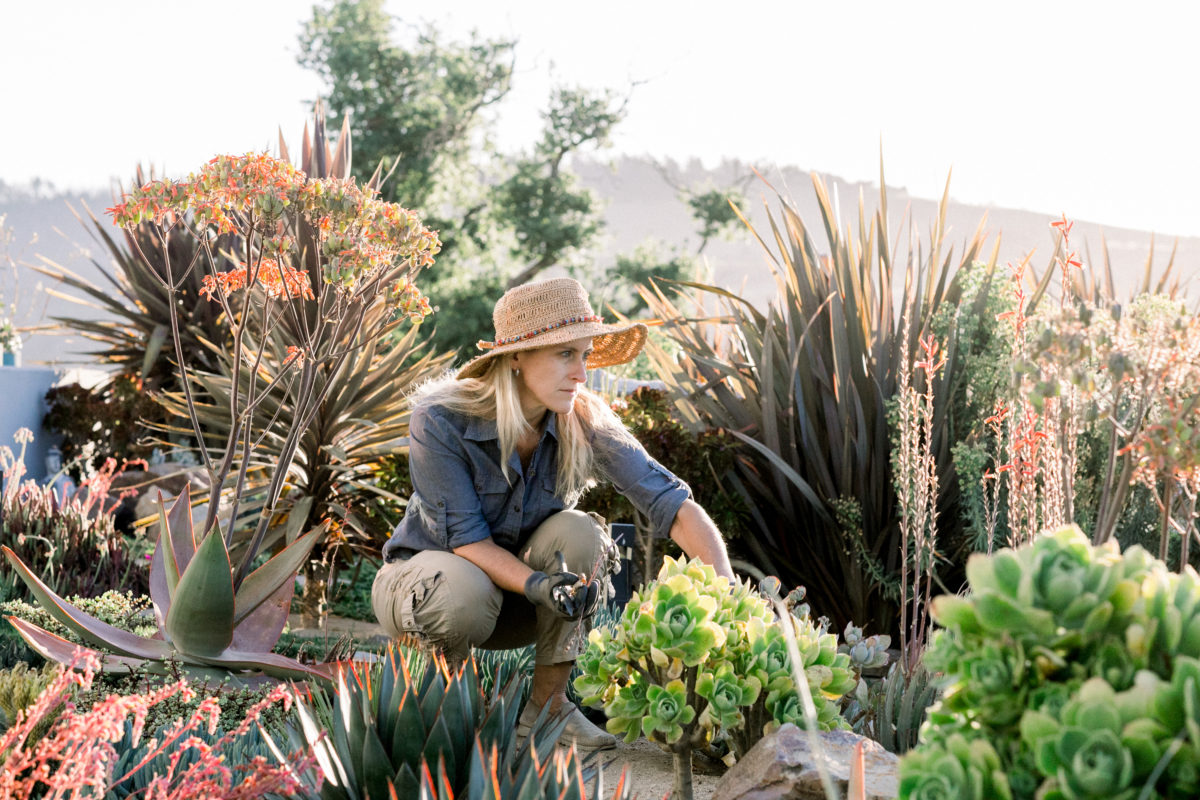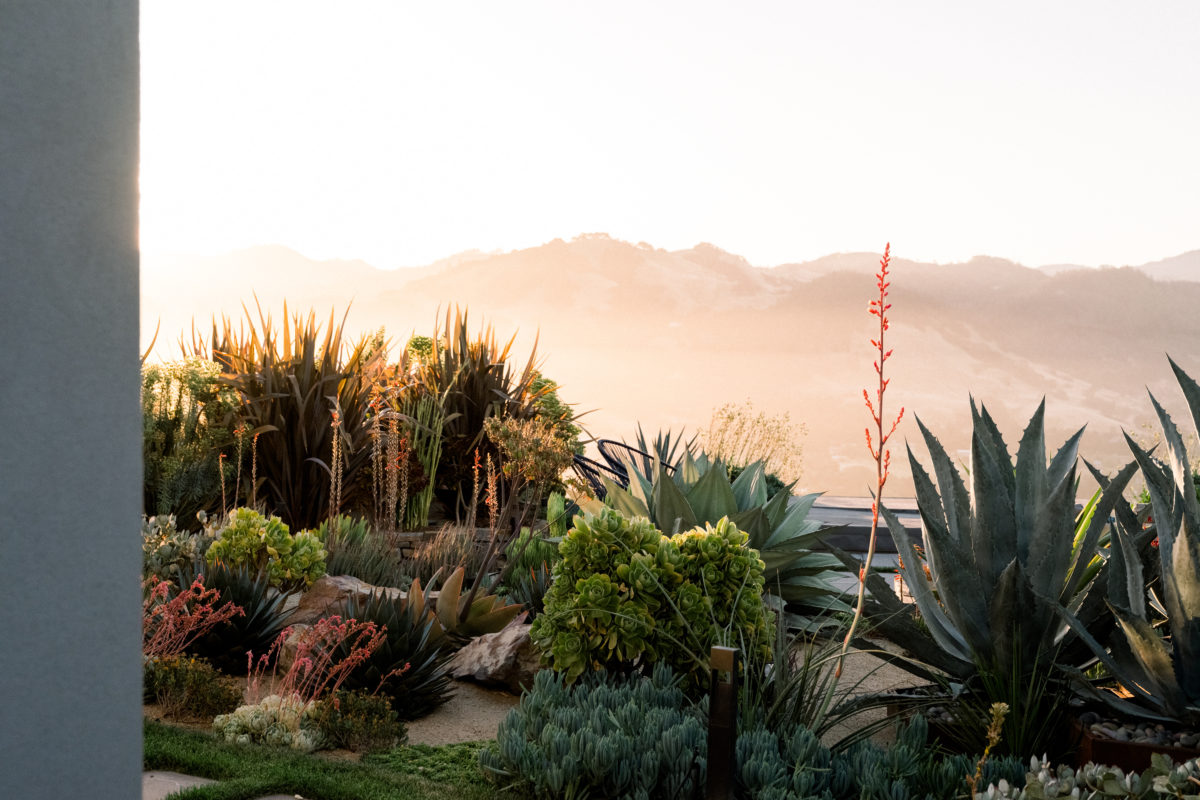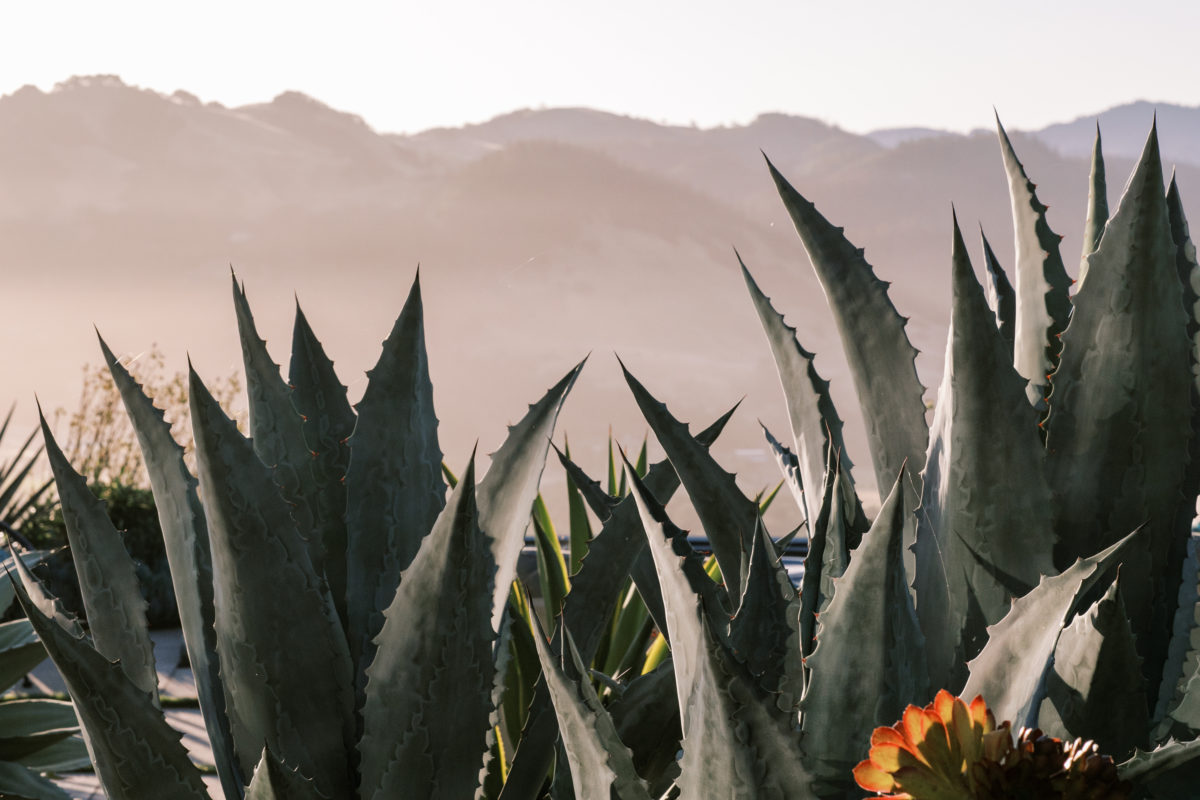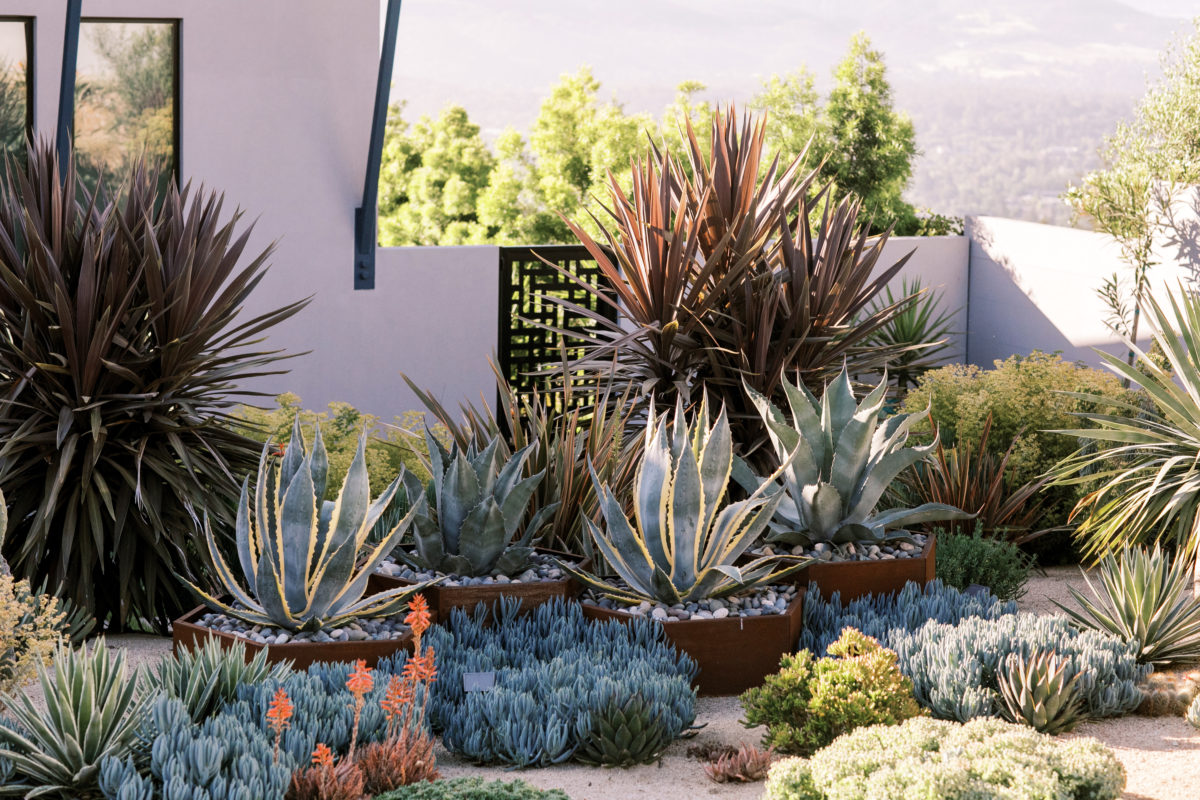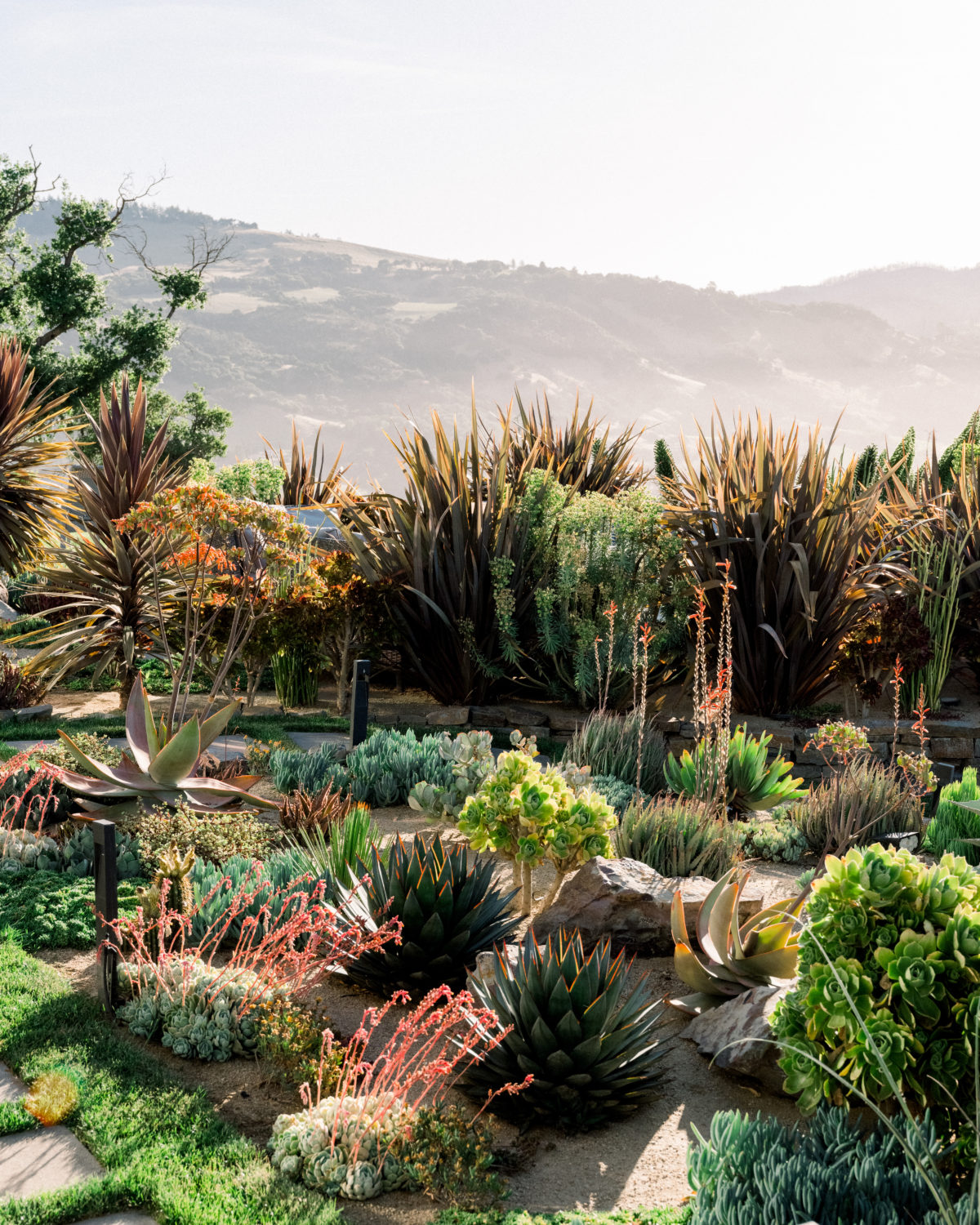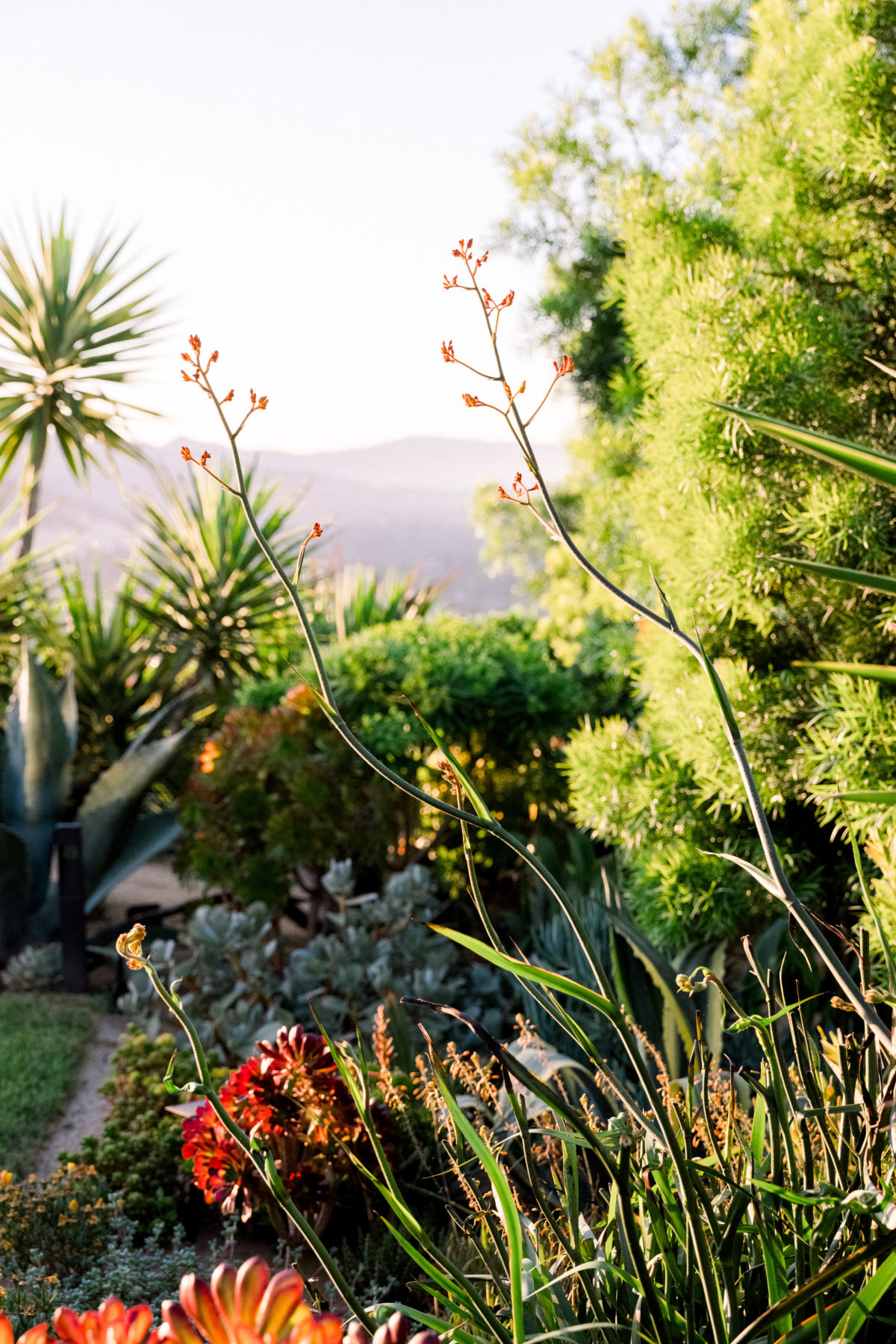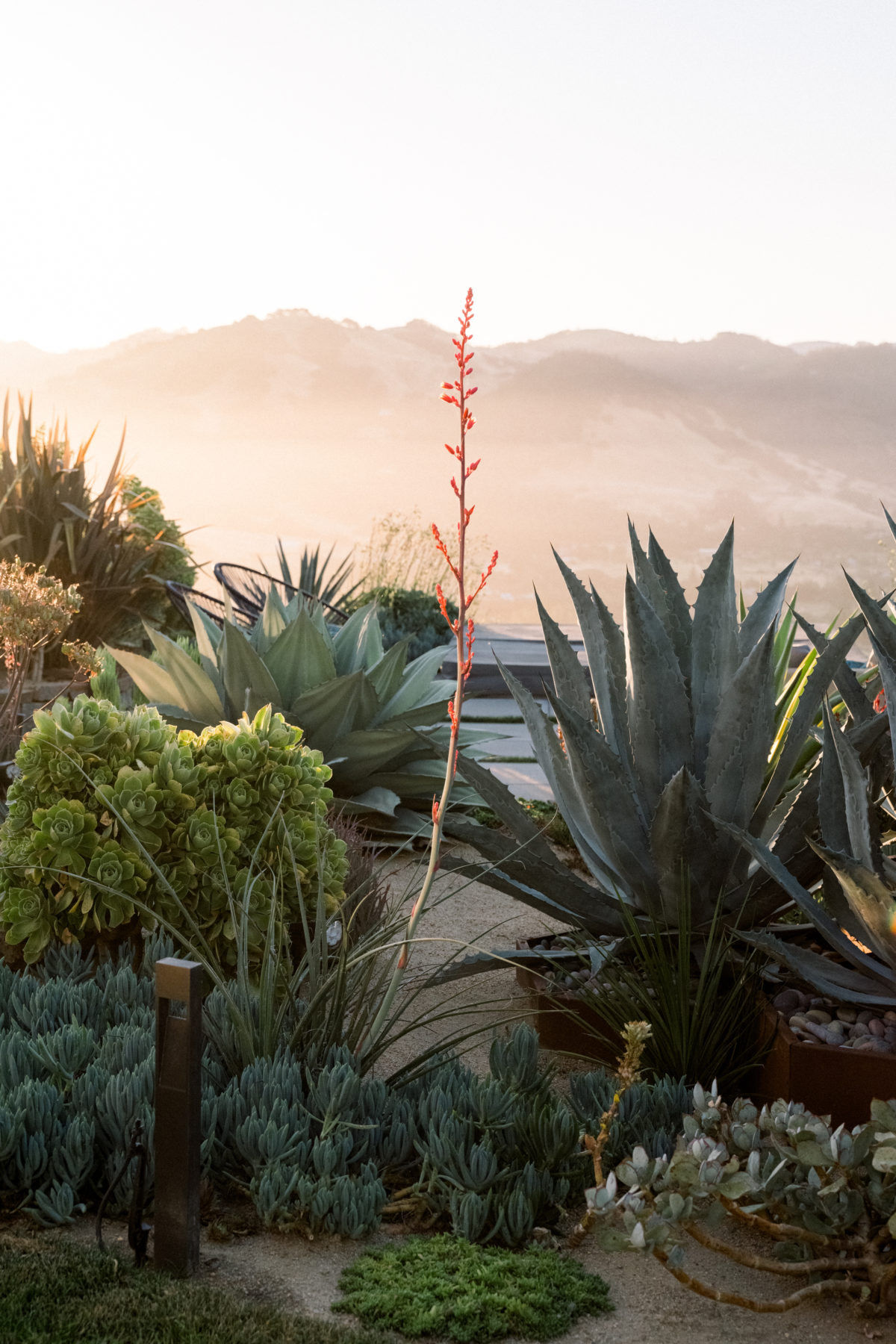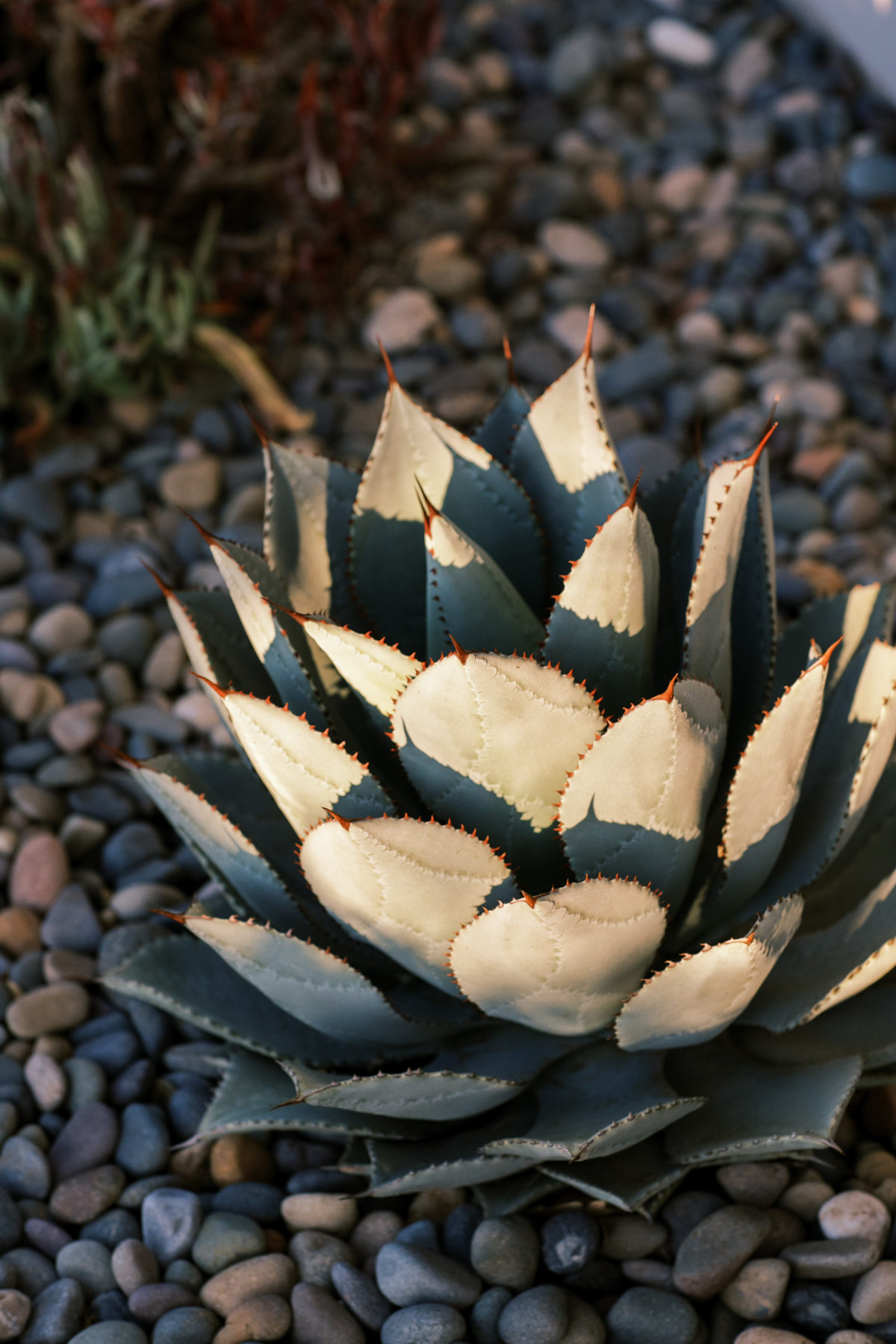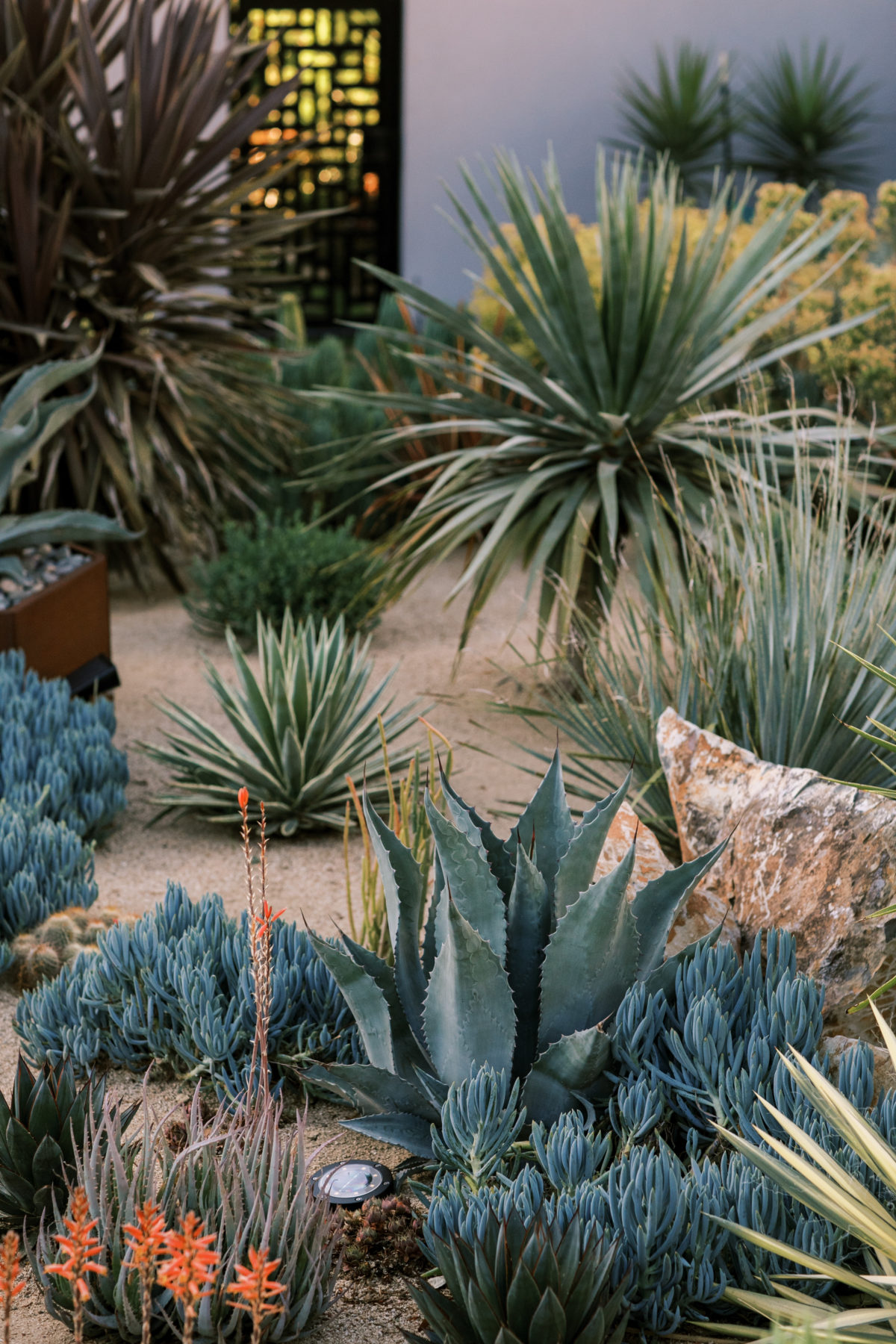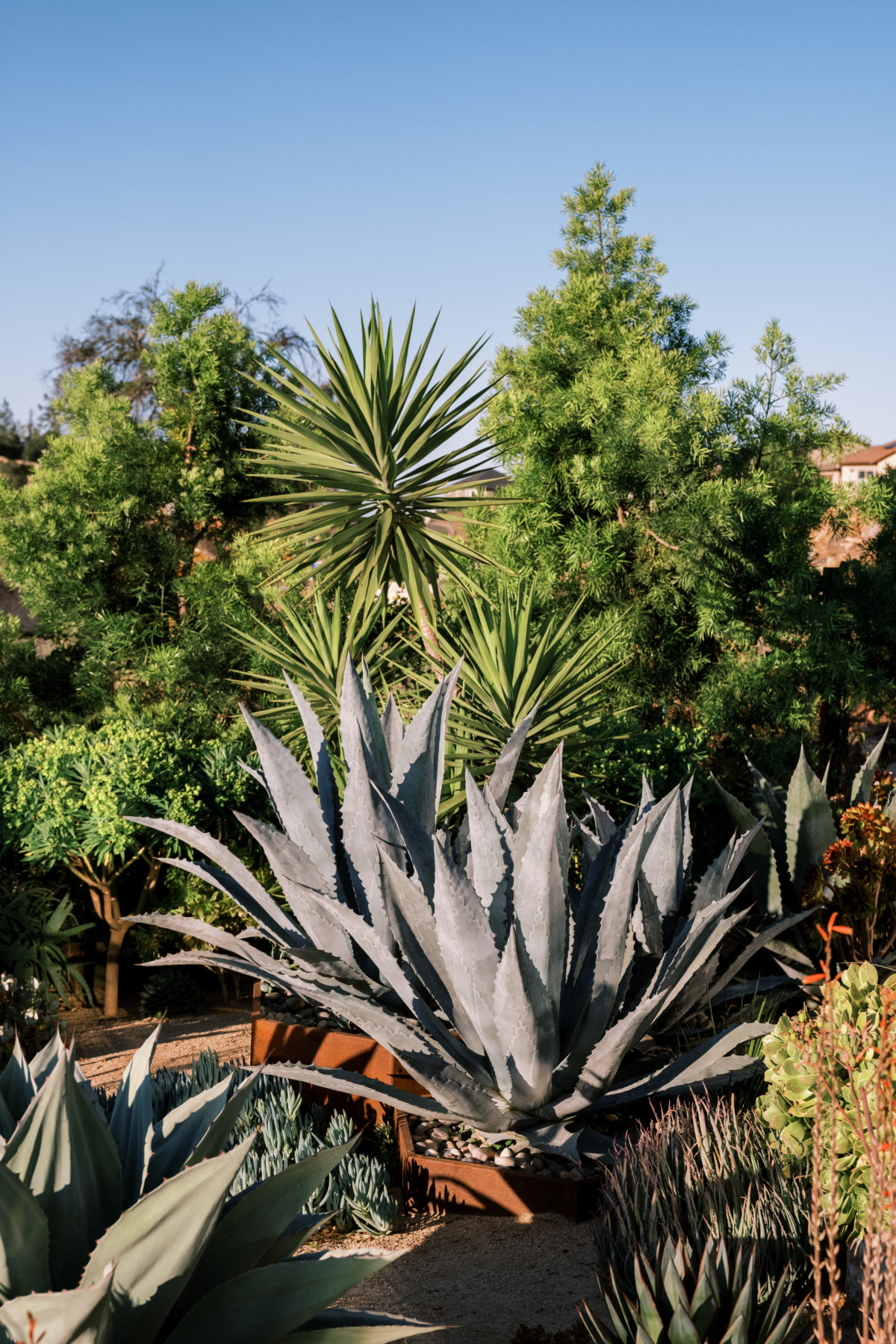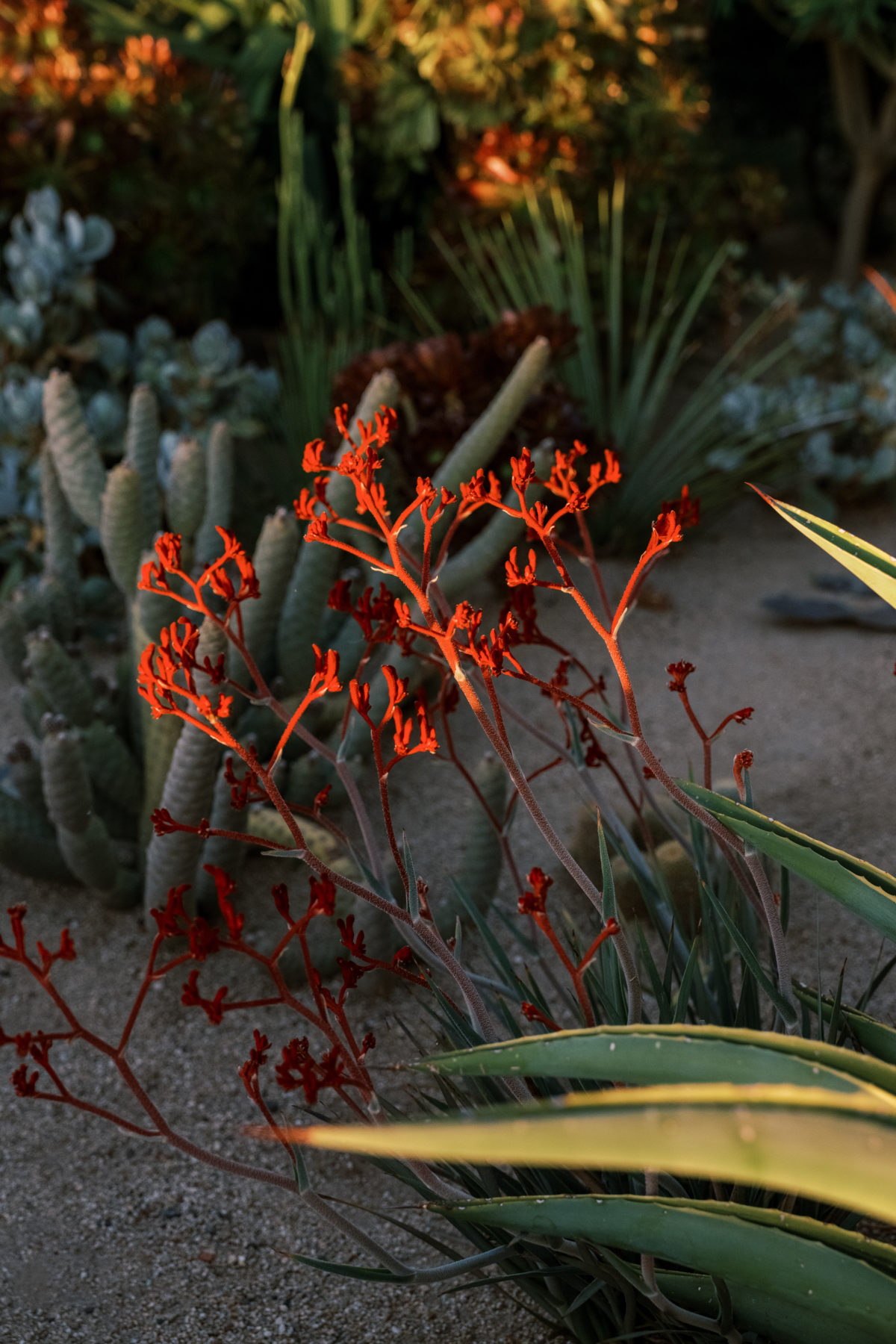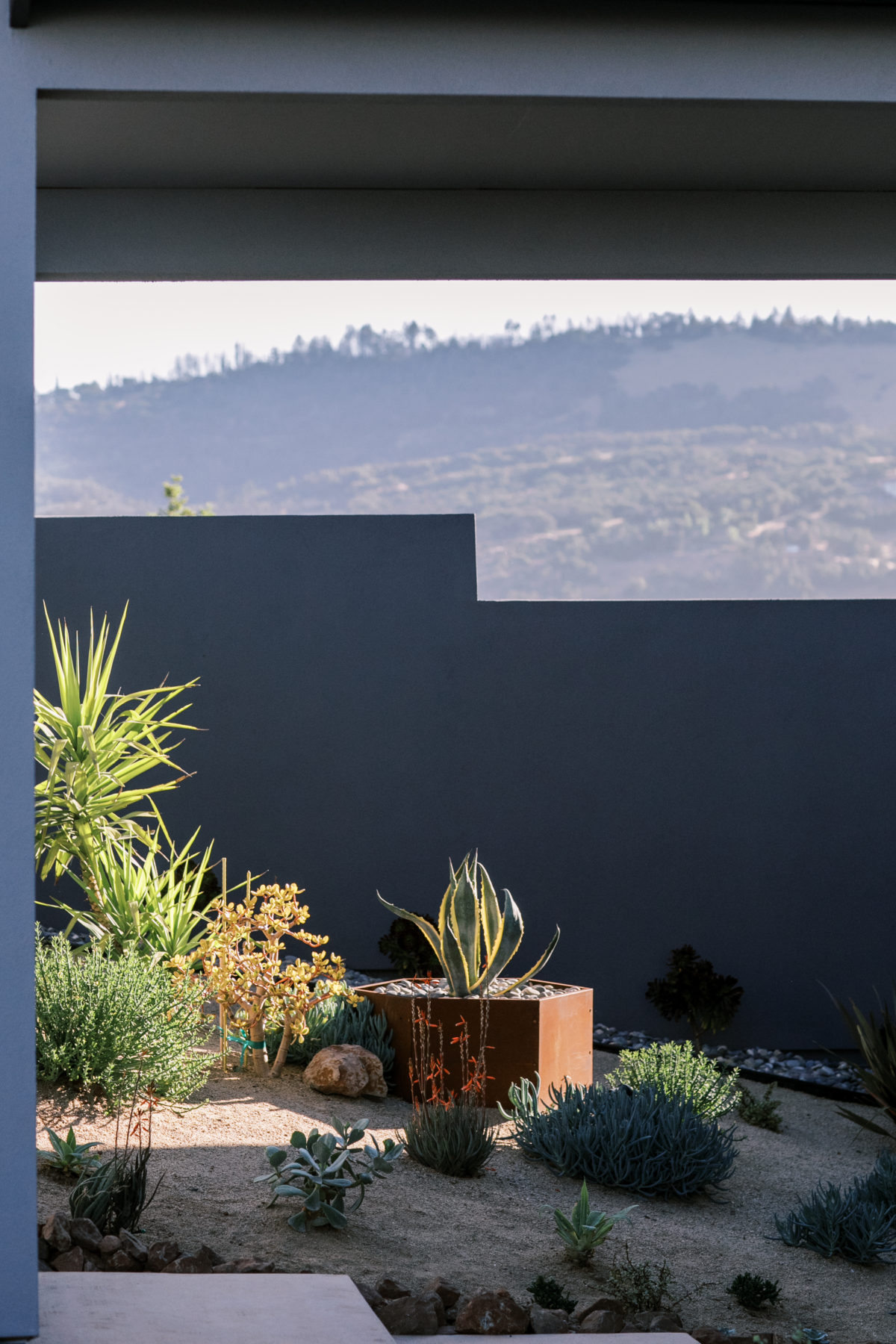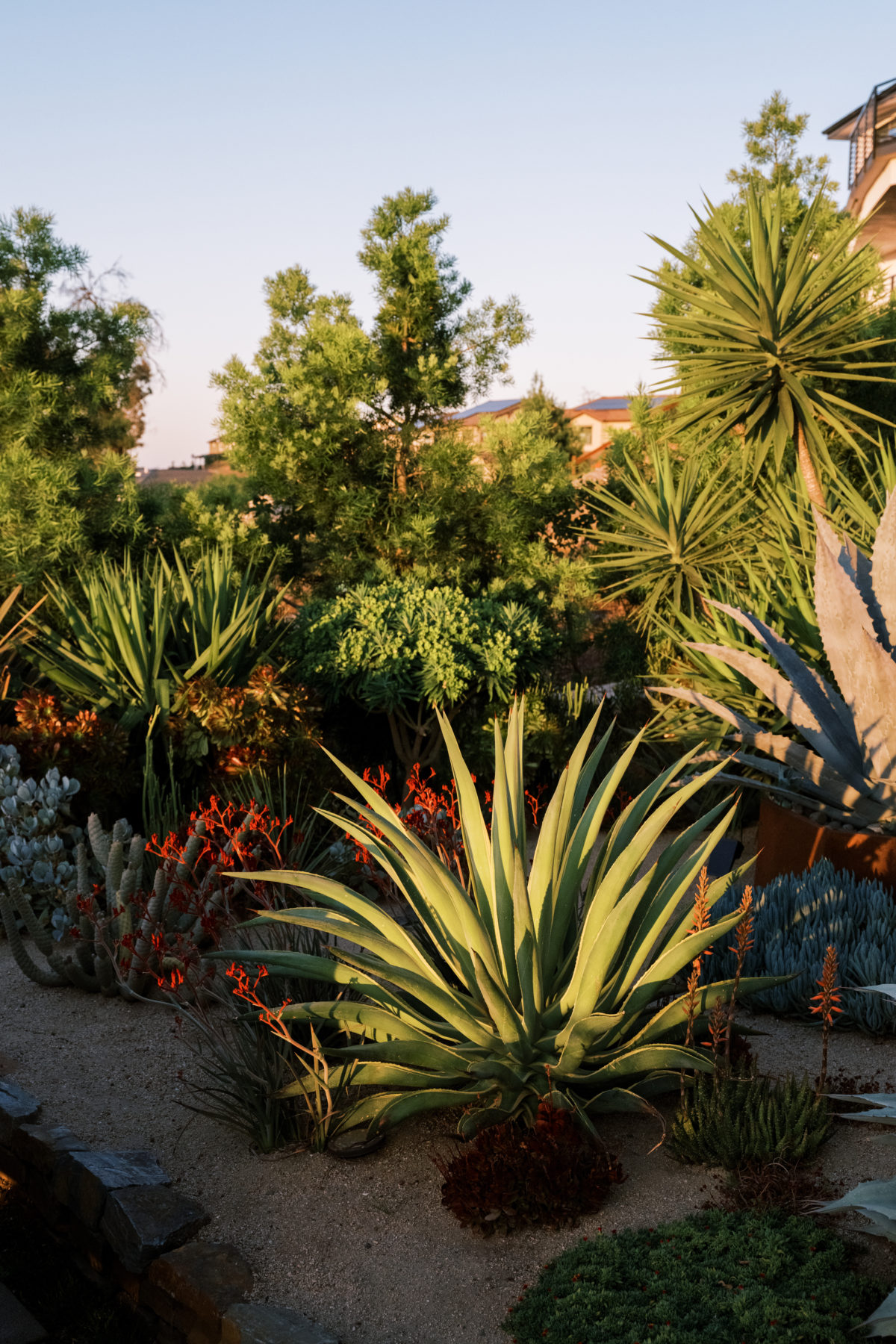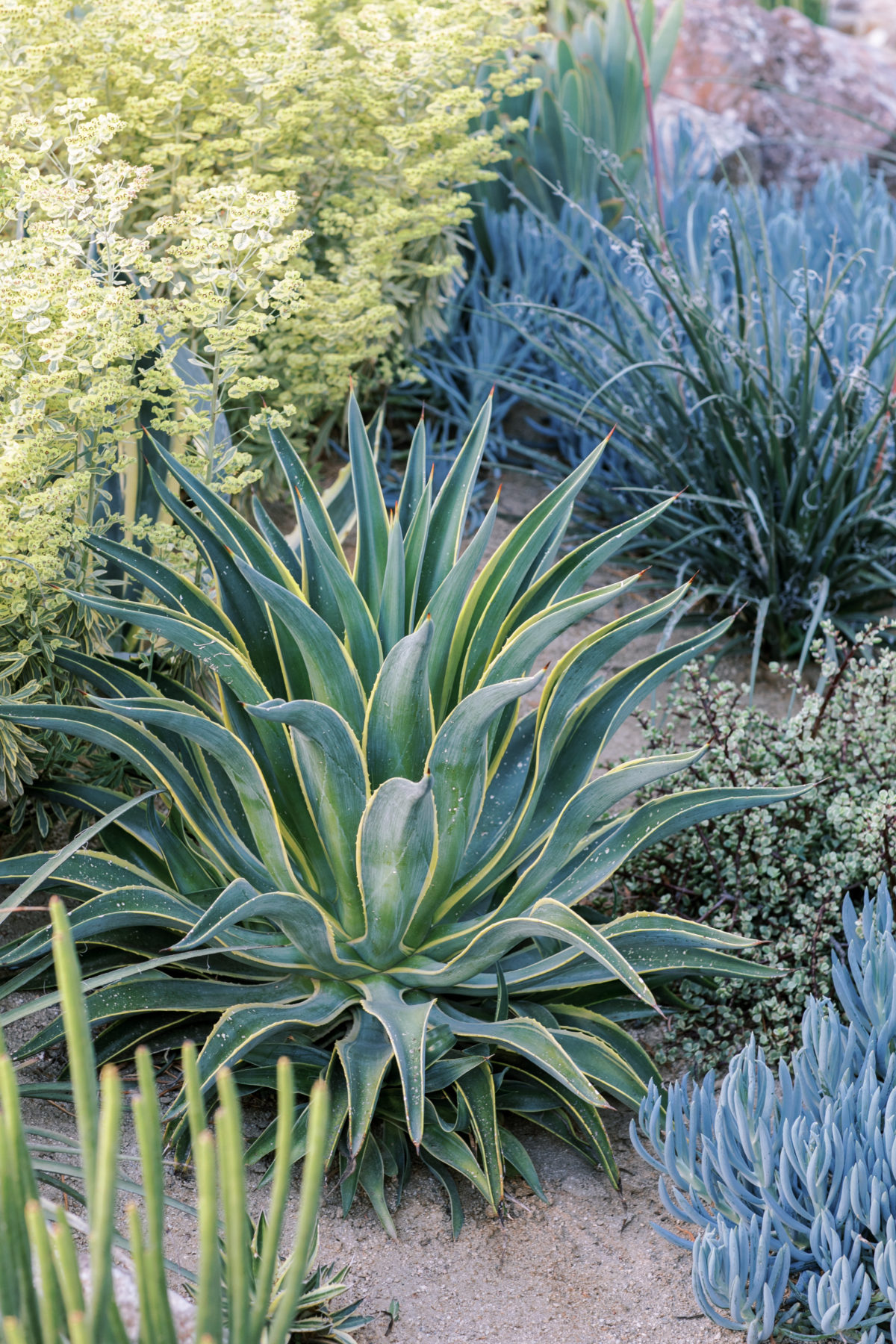On one hand, Damon and Lisa Mattson were among the lucky ones. Though their Fountaingrove home suffered significant damage in the catastrophic 2017 wildfires, it was not completely lost. Instead, the fire scorched the couple’s formerly tree-studded property, destroying the restful backyard retreat the pair had created.
The high cost of rebuilding their garage and fixing the home (they had to take the house “pretty much down to the studs” because of smoke and water damage, Lisa says), meant the couple put their skills and sweat equity to work.
Lisa and Damon went for a radically different look for the garden rebuild. It’s become a stunning, high-desert landscape of cactus and succulents that bloom from beds of finely-ground decomposed granite. They say the style makes them feel like they’re on vacation: Both are originally from the Midwest, and, at this point in their lives, they’re confirmed heat-seekers.
“We like to go to Vegas for vacations. We like to go to Mexico—anywhere that is a tropical or desert climate,” says Lisa, who works in marketing at Jordan Vineyard & Winery.
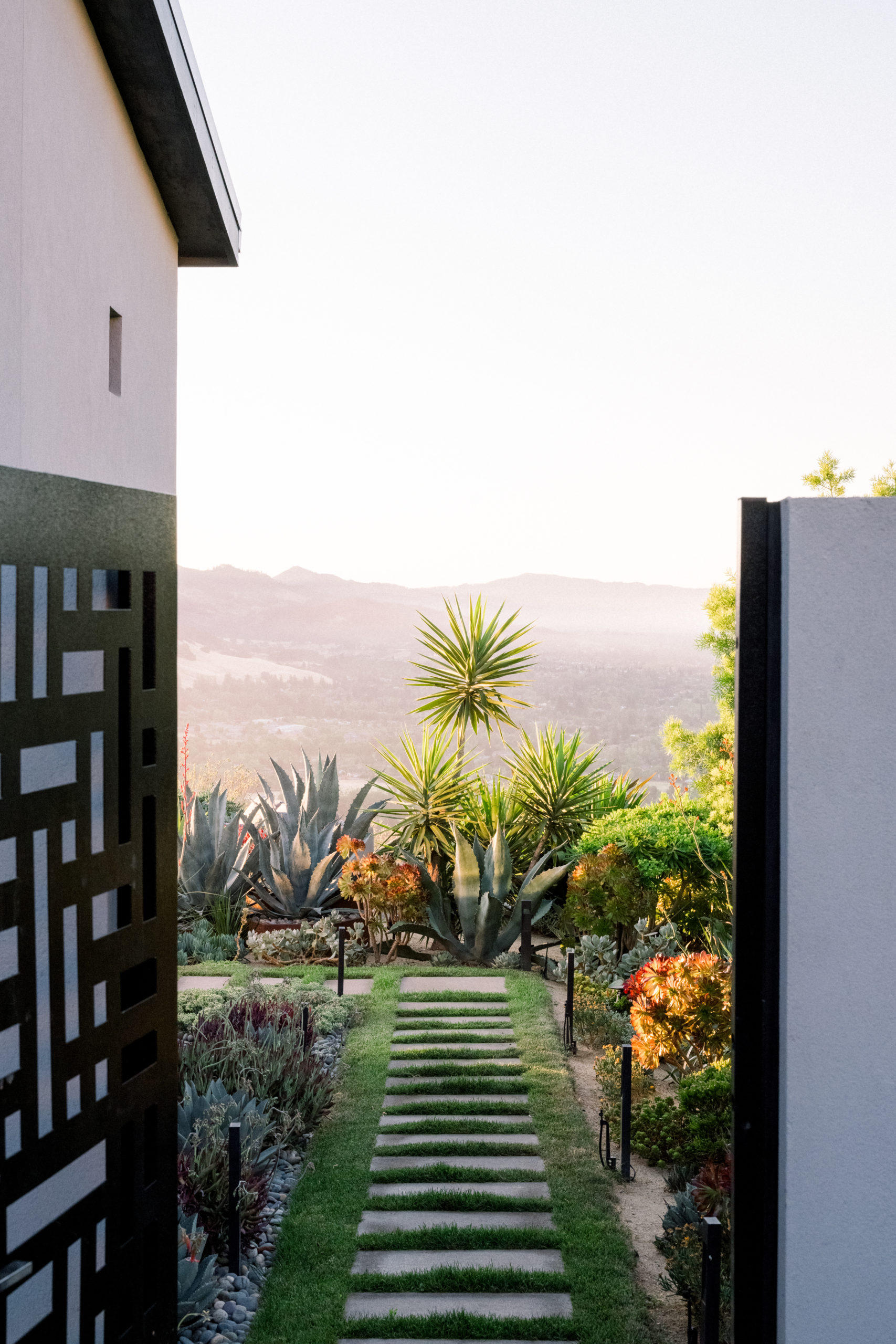
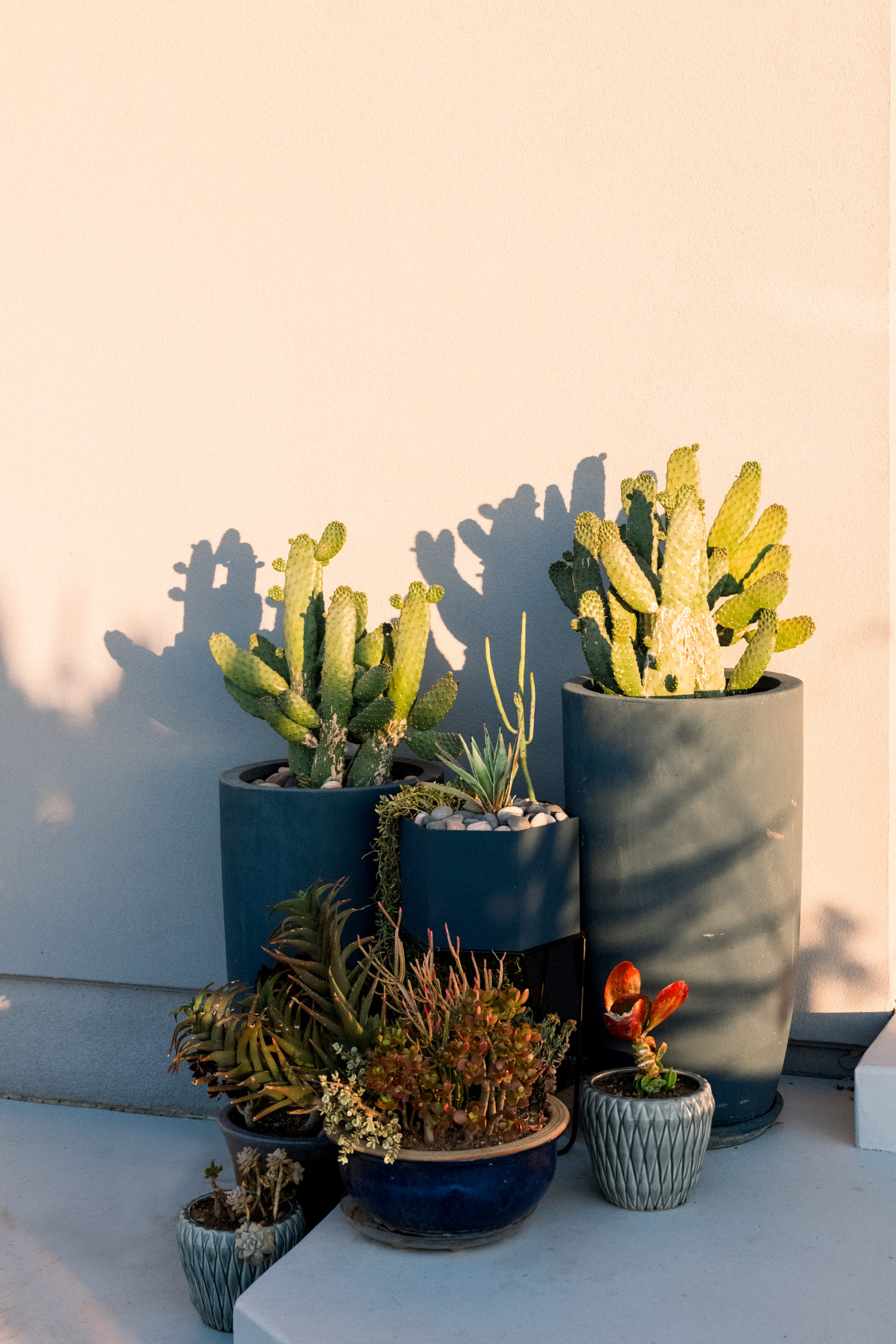
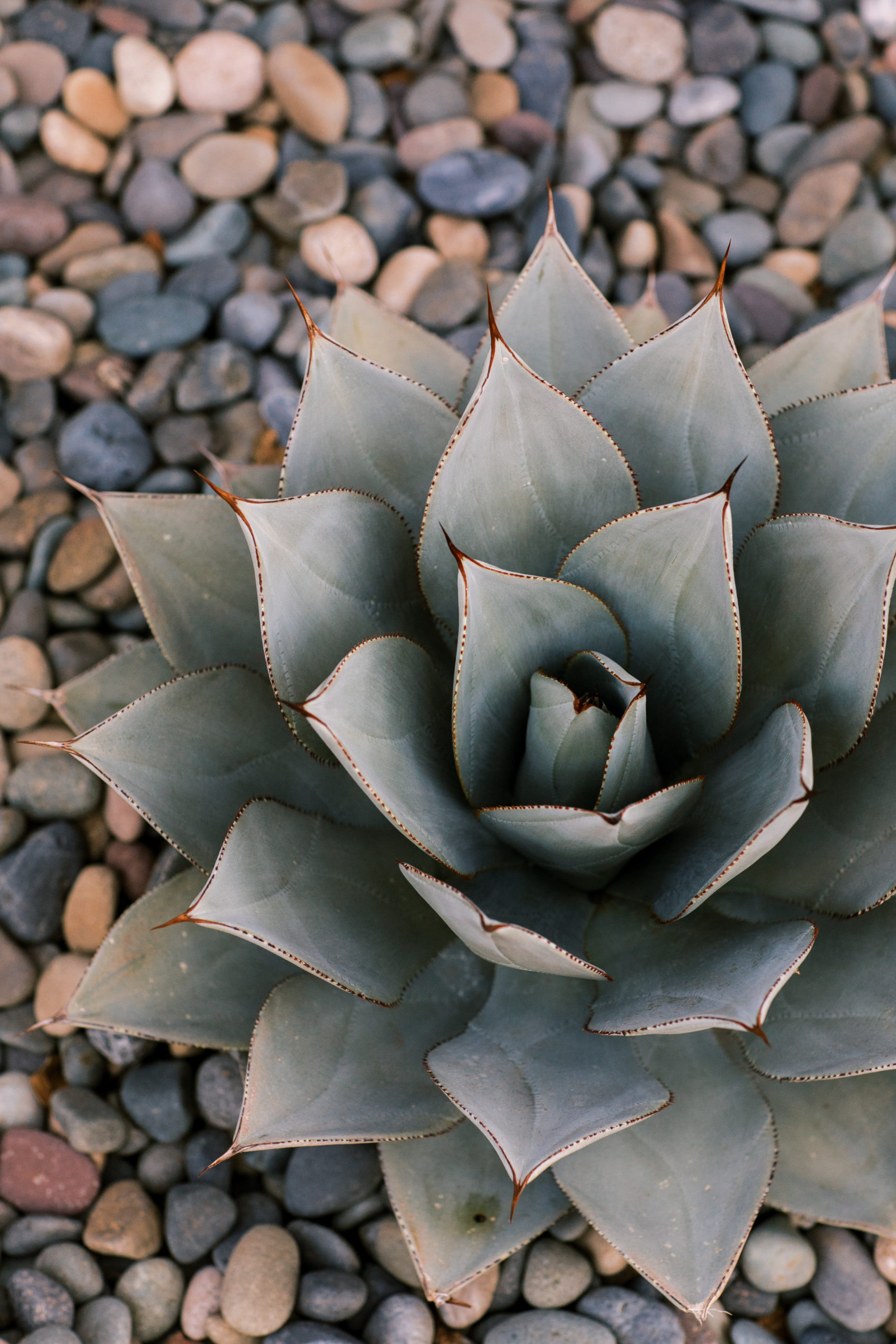
A changed landscape
Before the fire, Lisa and Damon lived in a shady site, protected from wind and tucked below grade at the top of the ridge, with a landscape of mature oaks, native grasses, and New Zealand flax. But very little of that made it through the firestorm. The couple lost over 50 trees, including many heritage oaks and bays. Only three cordylines, woody flowering plants native to Australia and New Zealand, and a few lowgrowing succulents called chalksticks remained. Coming back to the property for the first time two weeks after the fire moved through, Lisa says the yard, “looked like a moonscape.”
Rebuilding with succulents offered the couple the chance to be more water-wise — and to build a stronger defense against future fires. A firefighter from Geyserville who helped save the home in 2017, and whom Lisa later tracked down to thank, told them that during the firefight, the original wood mulch had caught on fire. “He said the mulch was like lighter fluid, and that was what caused a lot of our damage. So it was, like, ‘I’m never putting mulch back down,’” says Lisa.
The sand-like decomposed granite Lisa sourced for the new yard was a more expensive choice for ground covering, but also helps resist fire. So does the colorful plant palette of aeoniums, agaves, yuccas, euphorbias, and other succulents. Once established, succulents need much less irrigation and are resistant to heat, sun, and wind.
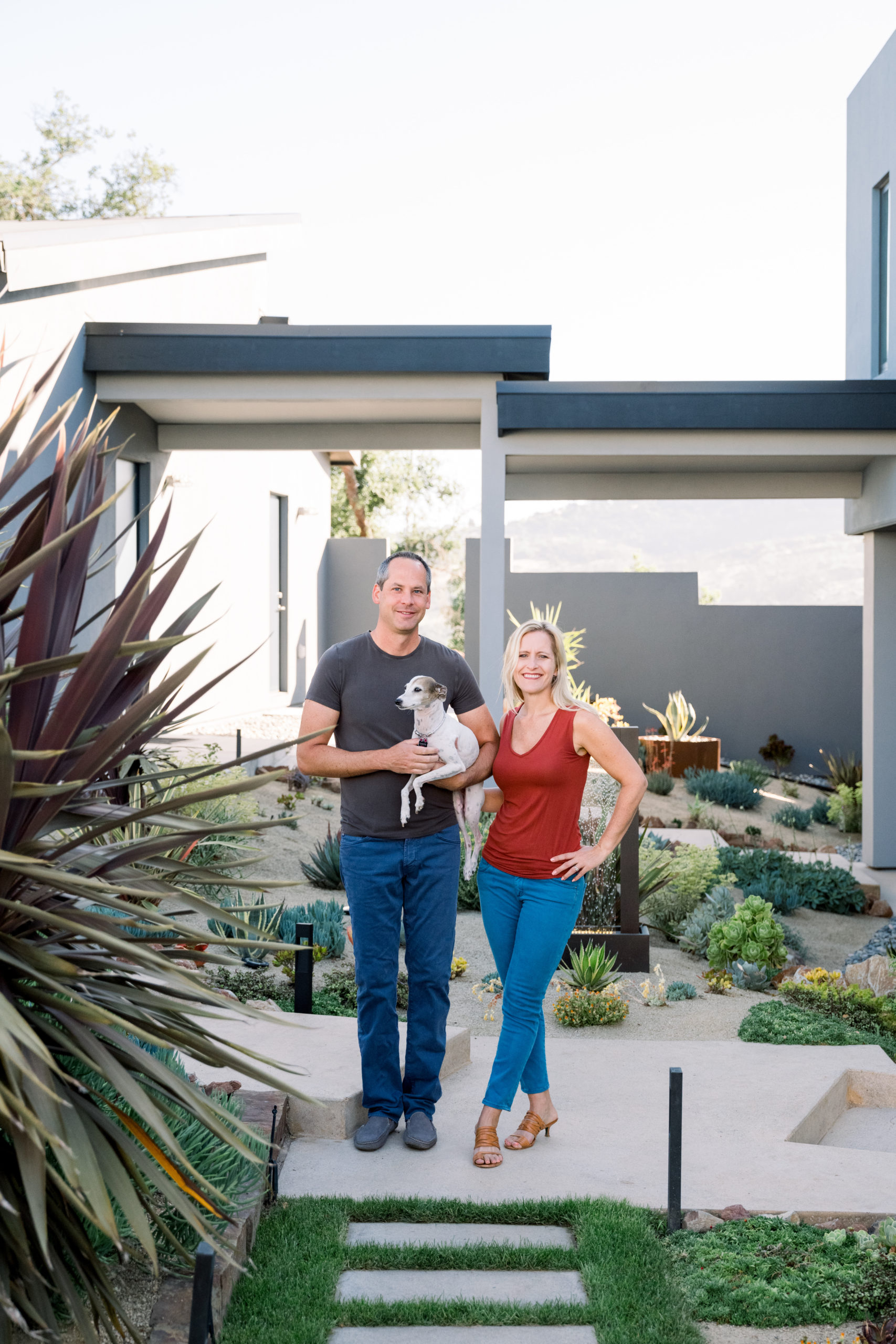
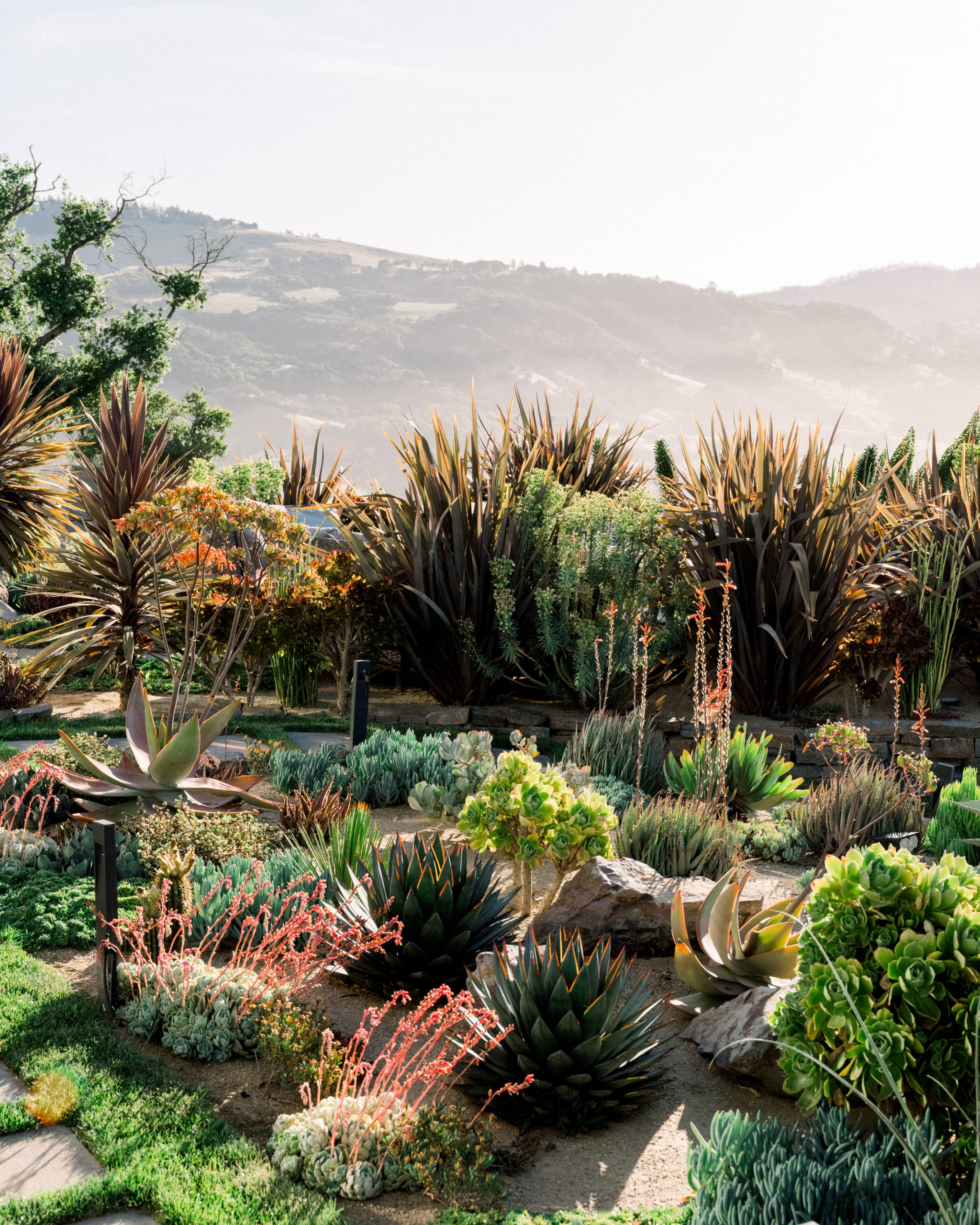
Santa Barbara inspiration
Starting pretty much from scratch wasn’t easy. And it was emotionally painful, too. The couple bought the home in 2011, and over time, Damon, who works at a medical device company, had built a beautiful firepit and gazebo—even an outdoor bed for napping. The process of designing and rebuilding what was lost took about two years.
Lisa had never designed a landscape before. But she was able to harness a strong creative aesthetic and a longtime love of plants, a passion she developed while in hospitality school in Florida in her early 20s. She started by drawing up outlines of the front and back yards on graph paper and marking any plants that remained. “I’d just get a piece of paper and draw out the aerial version, start with my focal points, and go from there,” she explains.
Lisa knew she wanted to base the design around succulents after walking through an old mission garden in Santa Barbara five years ago, and seeing an aeonium specimen the size of a person’s head. “I fell in love with the plants in Santa Barbara on that trip, and that’s what inspired me—that, and knowing I was going to have a full-sun yard,” she explains. “I just had this hope and vision that it could work.”
Containing costs
The garden was a ton of work, the majority of it squeezed into off-hours over a period of six months. “We would come and work here before work, lunch hours, after work, weekends,” Damon says. “It was ridiculous,” Lisa adds, laughing.
At one point, Lisa injured her shoulder digging out a walkway. But the couple persisted. Damon installed an underground drip system with multiple zones to deliver just the right amount of water to diverse plants, from the succulent beds and fruit trees to the grasses and African fern pines planted along one side of the property.
The couple was always looking for ways to shave costs without cutting quality. Before the fire, the home’s walkways were flagstone. The second time around, Lisa and Damon opted for preformed cement blocks that cost only a few dollars apiece. They planted hardy turf grass between the blocks, which provide a soft resting place for the eye. (They used the grass sparingly, because of water demands.) They had their hearts set on using Cor-Ten, a weathered steel, for a garden feature near their hot tub. But it would have cost $2,000 to custom order a Cor-Ten planter box. Instead, Lisa found rustic firewood log racks online for less than $200 each, which they cut up, turned on their side, and dug into the ground in tiers.
Lisa stockpiled plants for over a year, buying them small and bringing them up to planting size in her own little nursery. Now that the backyard has grown in, she continues to take cuttings and propagate additional plants. “That’s the thing with succulents— the way the root systems are, it’s really easy to move them,” Lisa explains. This past spring, after they finished rebuilding the garage, they were able to populate the front garden entirely with offshoots from more established plants in back.
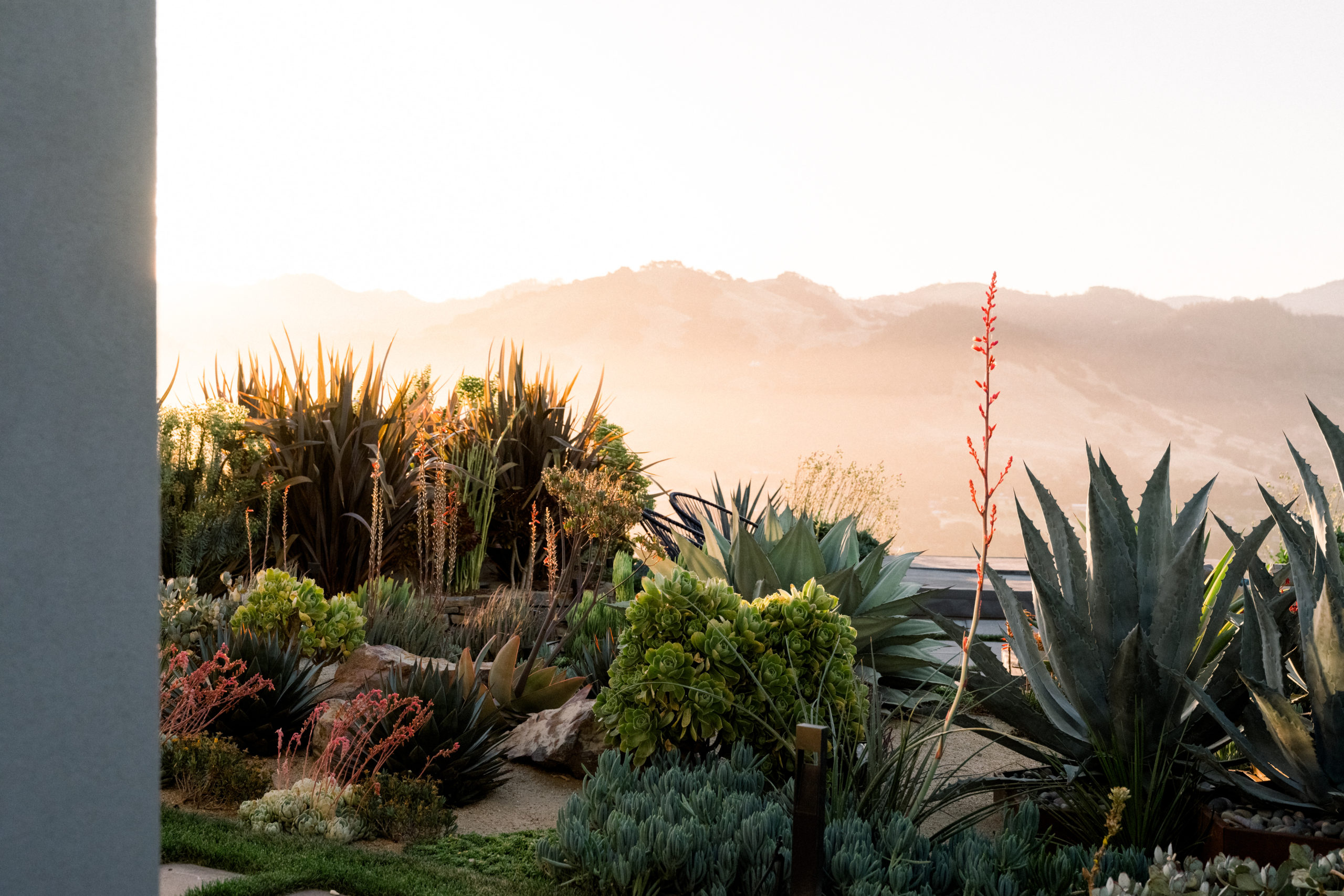
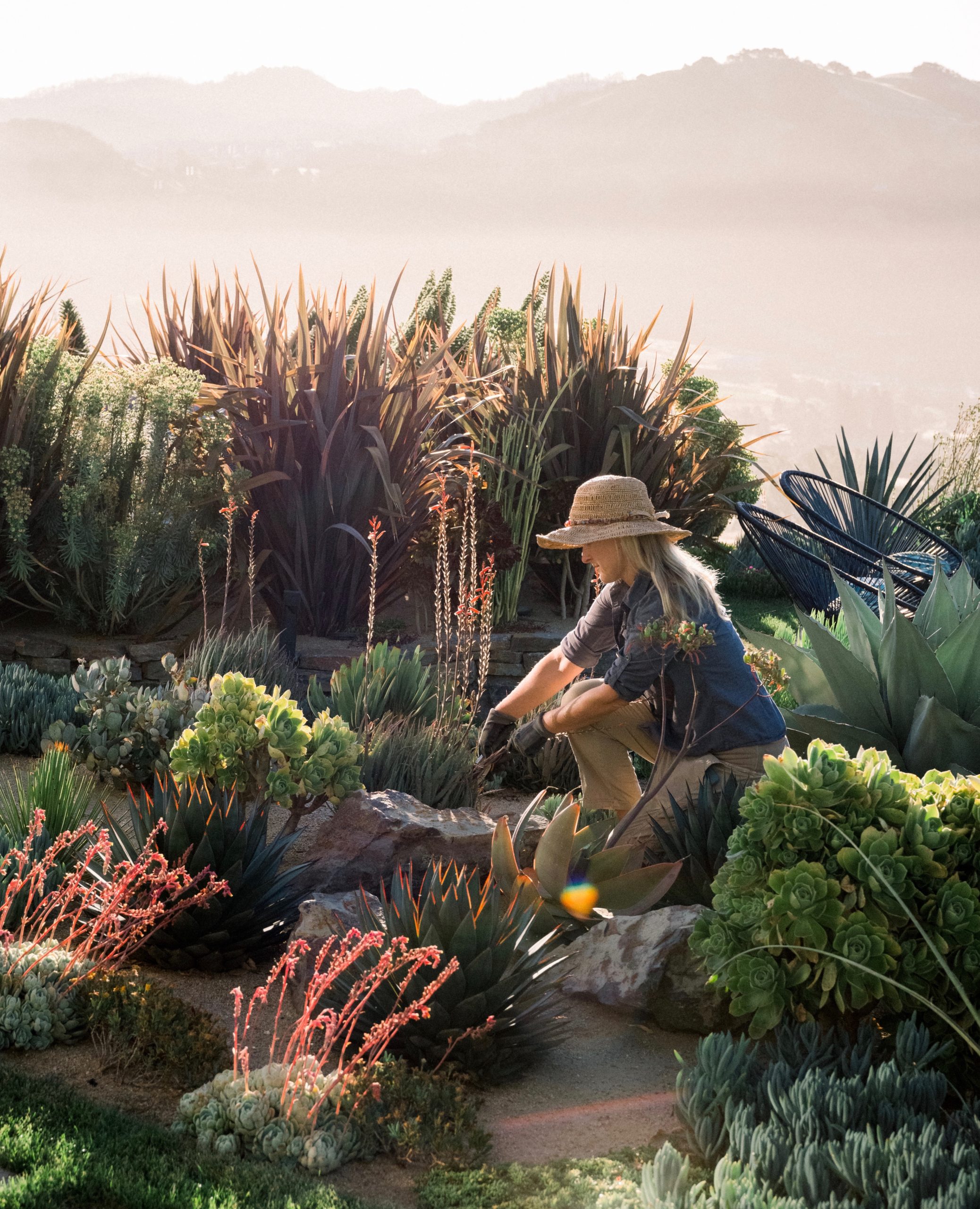
Coming home
After relocating while damaged sections of the house were rebuilt, the couple is thrilled to be back and enjoy their revamped outdoor space, in all different seasons and at all different times of the day. For all its seeming aridity, the garden is now a lush, year-round magnet for birds, particularly hummingbirds. Crows, yellow warblers, and white-throated swifts have returned, and Lisa and Damon even installed a new birdbath.
They orchestrated the design so there is something in bloom all through spring and summer. From February through April there are the coral and blue elf aloe, Echeveria, and kangaroo paws, followed in May and June by lady’s slippers, cannas, and red yucca. By July and August, there are fewer blooms, but the garden retains interest with a variety of shapes and colors.
“I loved doing it, and I love the plants and how everything turned out,” says Lisa. “We’re happy. We love the house more than before the fire—the colors, the yard and all of that—but, you know, it’s just what it took to get there.” With the hard tasks behind them, Damon and Lisa can take time to relax. “It’s turned out great considering what we were given,” says Damon. “It’s not something I ever wanted to do, but now that it’s done, it’s really nice. It turned out way better than I thought.”
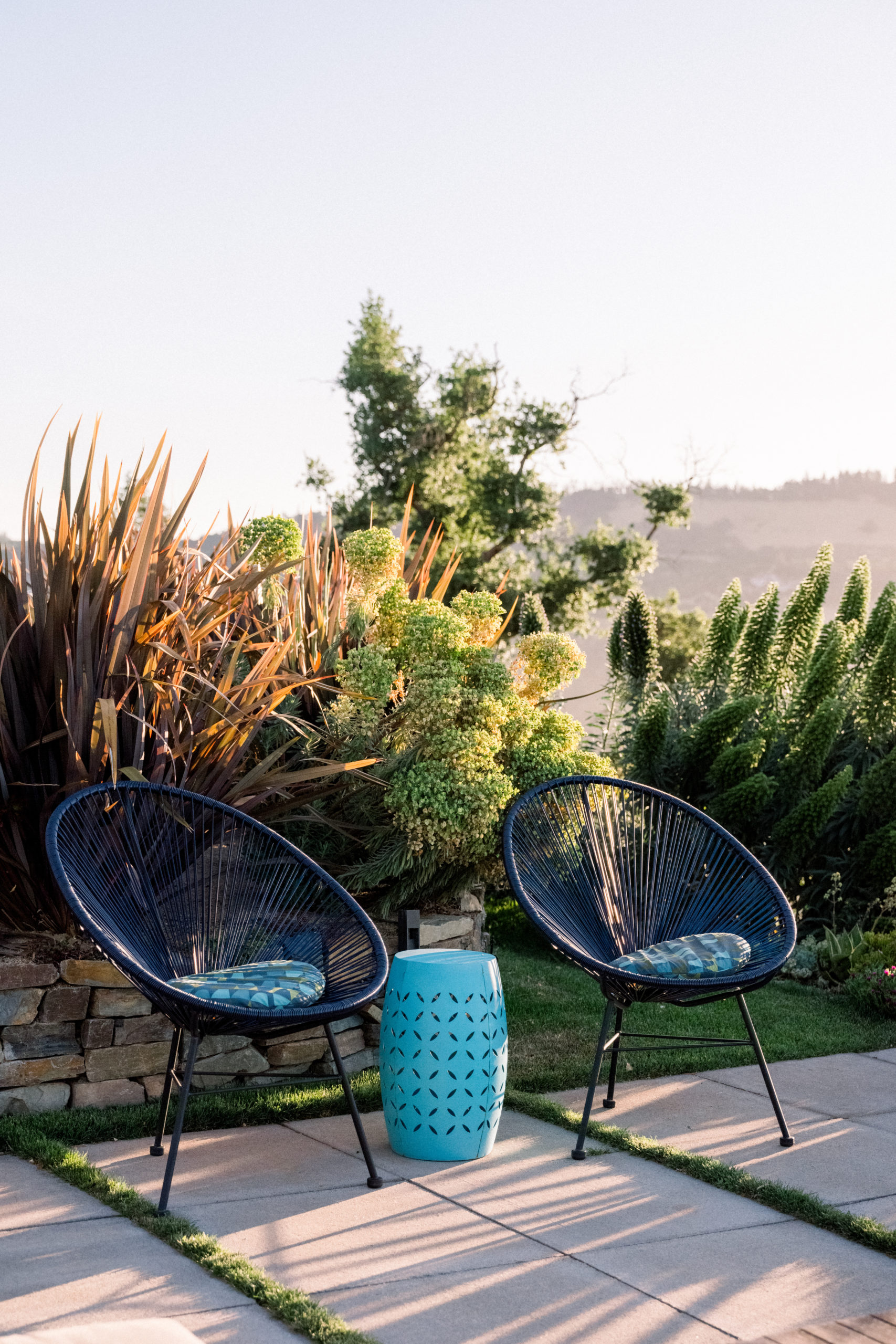
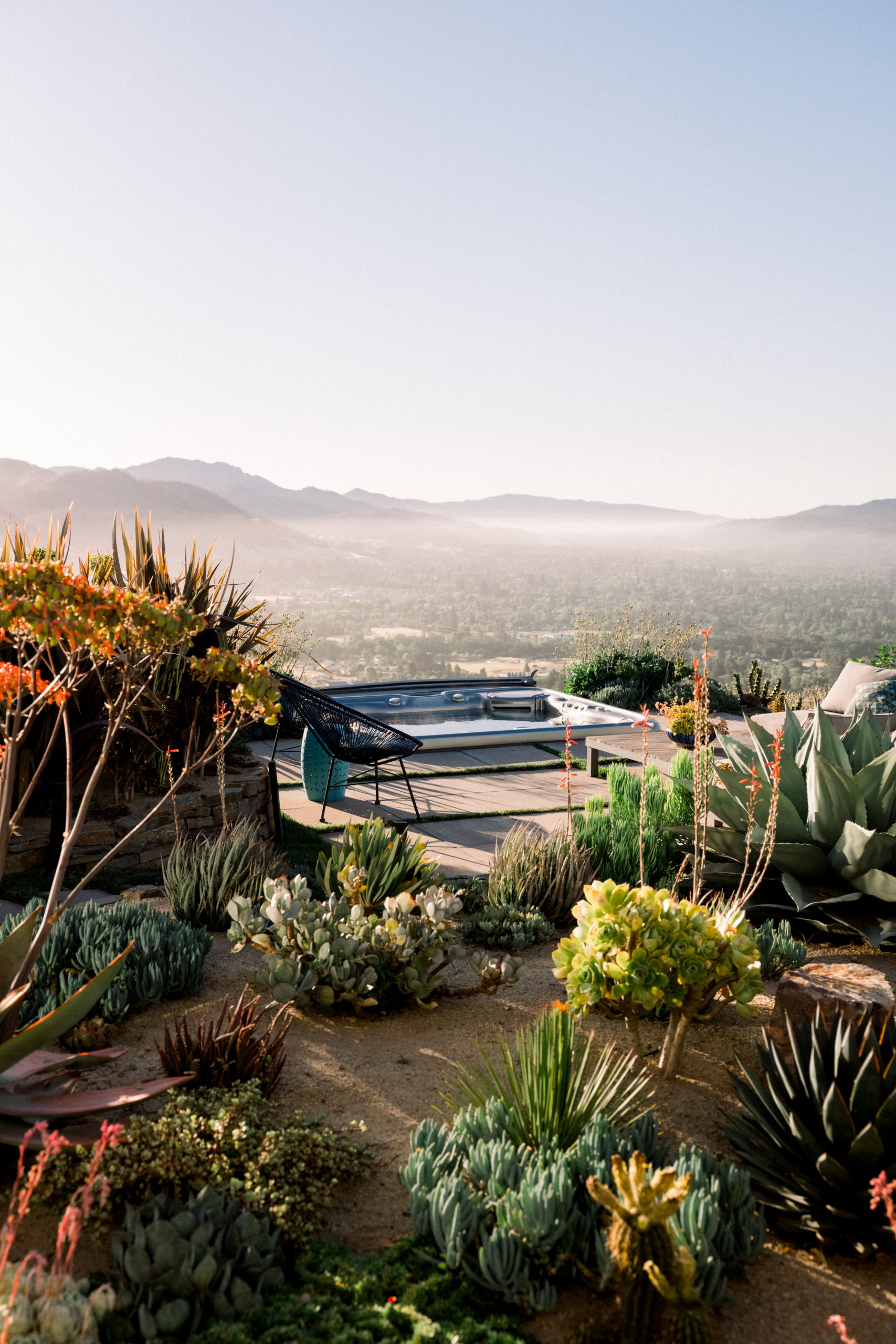
Keys to Succulent Success
Lisa Mattson has a clear passion for succulents. She propagates young offshoots, called pups, and uses them to fill in new areas of her garden or to give to friends and neighbors. “I have rooting powder, and I root my own succulents,” she says. “And it’s cool because they become gifts you can take to people.” Here are a few of her best tips.
Seek out local sources. Lisa’s go-to spots in Santa Rosa include King’s Nursery (they recently expanded their succulent selection, she notes), Urban Tree Farm, and Friedman’s. She has also ordered specimens from PlantsExpress.com and from Etsy.
Order a special soil. Cactus and succulents need well-draining soil. Lisa orders cactus planting mix from Santa Rosa landscape supply company Wheeler Zamaroni. They also carry the decomposed granite Lisa and Damon used as a fire-resistant groundcover.
Work with focal points. A tree, a grouping of boulders, or a planter provides structure. Then, sketch your design from above and the side, to plan for different heights, shapes, and colors. “I’m a visual person, so drawing it out works for me,” says Lisa.
Mix textures and forms. Lisa likes to vary spiky plants (agave, blue elf aloe, flax) with non-spiky ones like chalkstick, Echeveria, fan aloe, Euphorbia, and ice plant. Her favorite trees to mix with succulents include Dracaena draco (dragon tree), Cordyline australis ‘Red Star,’ ponytail palm, yucca, and Podocarpus (fern pine).







